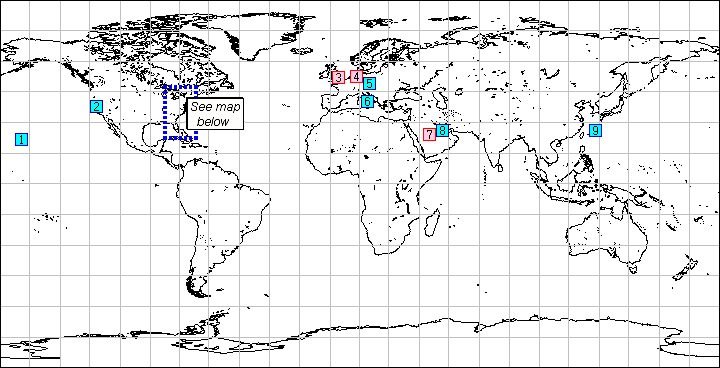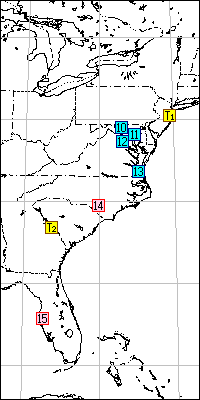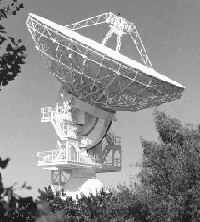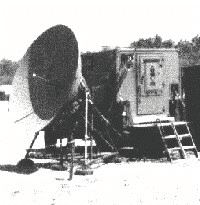STEP
Sites
Standardized
Tactical Entry Point
 |

|
 Wahiawa (Dual) Wahiawa (Dual)
 Camp Roberts (Dual) Camp Roberts (Dual)
 Croughton (Single) Croughton (Single)
 Ramstein (Single) Ramstein (Single)
 Landstuhl (Dual) Landstuhl (Dual)
 Lago di Patria (Dual) Lago di Patria (Dual)
 Riyadh (Single) Riyadh (Single)
 Bahrain (Dual) Bahrain (Dual)
 Ft Buckner (Dual) Ft Buckner (Dual)
 Ft Detrick (Dual) Ft Detrick (Dual)
 Ft Meade (Dual) Ft Meade (Dual)
 Ft Belvoir (Dual) Ft Belvoir (Dual)
 Northwest (Dual) Northwest (Dual)
 Ft Bragg (Single) Ft Bragg (Single)
 MacDill (Single) MacDill (Single)
 Ft Monmouth (Testing) Ft Monmouth (Testing)
 Ft Gordon (Training) Ft Gordon (Training) |
The STEP program
was developed in 1993 to resolve Commander-in-Chief (CINC) concerns about
the lack of global access to standardized Defense Information Systems Network
(DISN) services to support deployed Joint Task Forces (JTFs).
The Joint
Staff has directed the Digital Communications Satellite Subsystem (DCSS)
program to upgrade fifteen Defense Satellite Communications System (DSCS)
entry points worldwide. Access to DISN services will be standardized and
pre-positioned at each site.
On 20 December
1994, the Joint Staff, J-6, approved the DSCS STEP Design Plan, dated 7
October 1994.
The latest
STEP Concept of Operations (CONOPS), dated 12 May 1998, was signed out
by the Joint Staff Director for Command, Control, Communications, Computers
and Intelligence (C4I) Systems.
Due to space
limitations and equipment availability problems, the Communications and
Electronics Command (CECOM) Space and Terrestrial Communications Directorate
(S&TCD) began work to satisfy the STEP functions in a cost-effective,
down-sized, card-level implementation. On 29 May 1997, the Multiplexer
Integration and DCSS Automation System (MIDAS) contract was awarded to
Raytheon Electronic Systems.




 Wahiawa (Dual)
Wahiawa (Dual)
 Camp Roberts (Dual)
Camp Roberts (Dual)
 Croughton (Single)
Croughton (Single)
 Ramstein (Single)
Ramstein (Single)
 Landstuhl (Dual)
Landstuhl (Dual)
 Lago di Patria (Dual)
Lago di Patria (Dual)
 Riyadh (Single)
Riyadh (Single)
 Bahrain (Dual)
Bahrain (Dual)
 Ft Buckner (Dual)
Ft Buckner (Dual)
 Ft Detrick (Dual)
Ft Detrick (Dual)
 Ft Meade (Dual)
Ft Meade (Dual)
 Ft Belvoir (Dual)
Ft Belvoir (Dual)
 Northwest (Dual)
Northwest (Dual)
 Ft Bragg (Single)
Ft Bragg (Single)
 MacDill (Single)
MacDill (Single)
 Ft Monmouth (Testing)
Ft Monmouth (Testing)
 Ft Gordon (Training)
Ft Gordon (Training)
